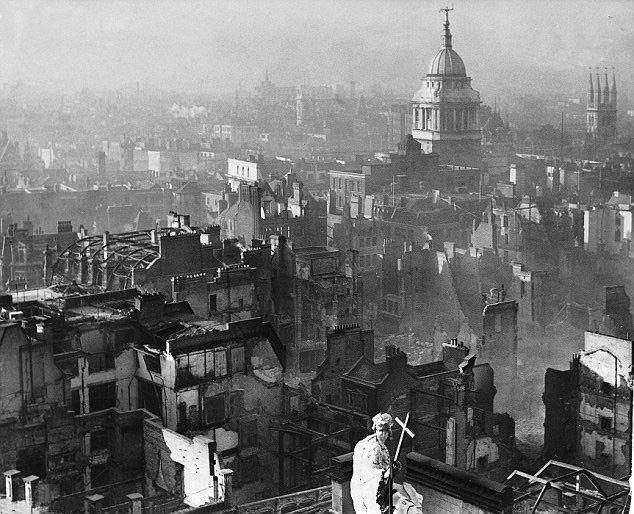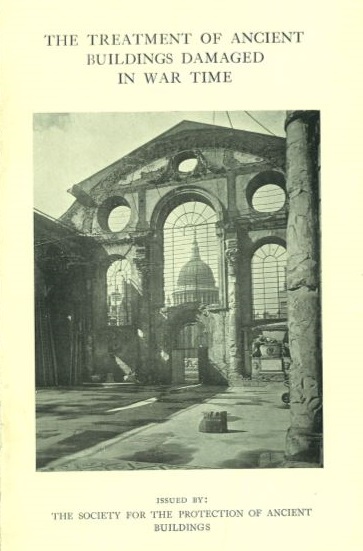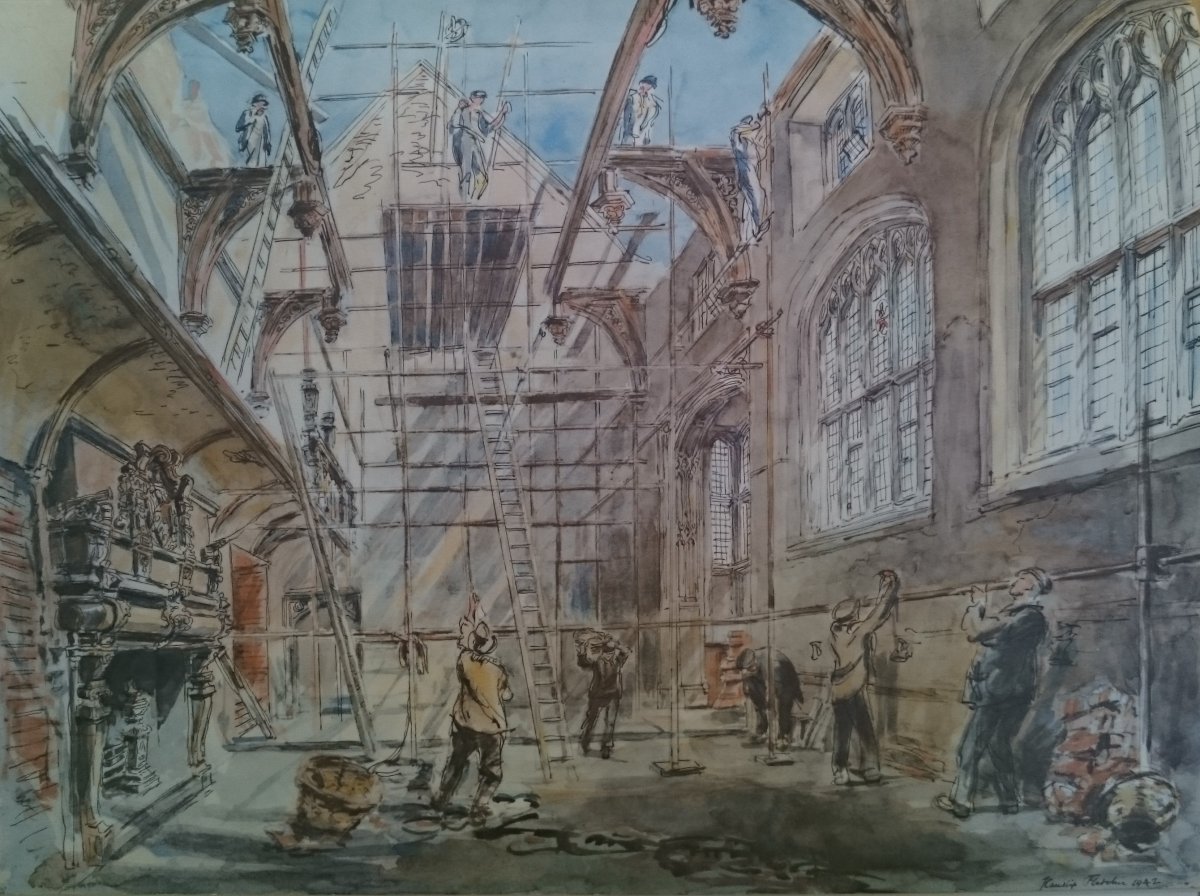8 May 2020 marks the 75th anniversary of VE Day, the effective end of the Second World War in Europe - though fighting continued until the surrender of Japan to the Allies on 15 August 1945. We take a look into our archive to reflect on the SPAB’s work during the war years and its response to the effects of the conflict, which fell into three broad areas.
Recording
In the Second World War, the War Artists Advisory Committee established by Sir Kenneth Clarke (then Director of National Gallery) deployed artists to record the conflict and its impacts. Their work proceeded in tandem with the Recording Britain project, also instigated by Clarke and funded by the Pilgrim Trust.
Recording Britain’s objectives aligned with the concerns of bodies like the SPAB. Artists such as John Piper and Michael Rothenstein were commissioned to document not only buildings and places, but traditions and ways of life threatened physically by the war and by the likely dawning of a new post-war age. They particularly sought out the traditional craftspeople, and the parish churches, small towns and country villages so valued by the SPAB, which were selected for their typicality rather than their architectural merit.

The National Buildings Record (NBR) took a more technical approach. Started in 1940 by the architect and antiquary Walter Godfrey, it photographed and collected records of buildings at risk from war damage. The resources it generated underpinned the creation of lists of buildings of special historic and architectural interest that followed the Town and Country Planning Acts of 1944 and 1947 (the legislation that introduced listed buildings and planning permission). The SPAB’s Technical Adviser, architect JEM Macgregor, was a member of the NBR organising committee. The SPAB also received and annotated copies of the “Blitz List”: a confidential record of important buildings that had sustained air raid damage compiled by the London County Council Architects Department.
 Damage and Rebuilding
Damage and Rebuilding
The SPAB’s involvement with reconstruction throughout the First World War continued in the Second. In 1940 the SPAB issued a simple pamphlet The Treatment of Ancient Buildings Damaged in War Time which set out its well-developed views on the subject. Unsurprisingly, it saw “first aid” as crucial in allowing “injured” buildings to survive long enough for considered decisions to be taken. It also argued that each case should be judged on its own merits and suggested that where a building was not to be left as a ruin, a creative response to its reuse, carried out in a harmonious but contemporary design, might be appropriate.
That same year, the SPAB was among the bodies consulted by the Ministry of Works about setting up a panel of architects able to assess war damage to historic buildings and make recommendations about immediate works. The resulting group of advisers, capable of applying just the type of “wise discretion” the SPAB had recommended in its pamphlet, included a number of architects associated with the Society: JEM Macgregor, Professor Richardson, FW Troup, William Weir, Clough Williams Ellis and Marshall Sisson.
War Memorials
The SPAB also maintained its close engagement with the form and nature of war memorials. It was a contributor to the work of the War Memorials Advisory Council, established in 1944 by the Royal Society of Arts. It was represented on the Council by its Chairman, Lord Esher, but its standpoint on memorials was debated extensively by its committee. JEM Macgregor had written a memo – War Memorials As They Affect Old Buildings - for Esher in July of that year. This elaborates the view that some WWI memorials attached to old buildings had had a negative aesthetic impact and that, although churches would still seem a natural home for further commemoration, it might be more appropriate to recondition a portion of the fabric as a memorial, recording the action on a small tablet, and to list the roll of honour in a Book of Remembrance, rather than make another “expensive addition or embellishment” to the building.
The SPAB’s archive file also contains Macgregor’s amendments of 12 July 1944 to a draft of the Statement on War Memorials later published by the Advisory Council. The finished document indicates either the SPAB’s influence or that it was of a common mind with the other contributing bodies (e.g. the National Trust, Royal Society of Arts, Council for the Protection of Rural England). Offering guidance to local war memorial committees, the Statement is notable for advocating practical memorials to benefit the living, rather than further public monument-making on the scale seen after 1918. These memorials included recreation facilities, village halls, open spaces, and hospitals or homes for the care of returning wounded or disabled service people. In discussing Gardens of Memory, the Statement suggested that “in war damaged towns, bombed sites could be converted into beautiful oases in otherwise characterless deserts of brick and mortar”. Significantly, it also discussed “the acquisition and preservation of buildings of historic interest or architectural importance” as memorials; and the repair and reconditioning of similar buildings already in public ownership, as well as “historically valuable” buildings so damaged by war that “natural economy would otherwise dictate… demolition”.

Images
View from St Paul's Cathedral, London on 3 January 1941. Credit: H.Mason via wikicommons
The Treatment of Ancient Buildings Damaged in War Time (SPAB pamphlet) – SPAB Archive
Bombed London – Plate 30: Great Hall of the Charterhouse (1942) illustration by Hanslip Fletcher
